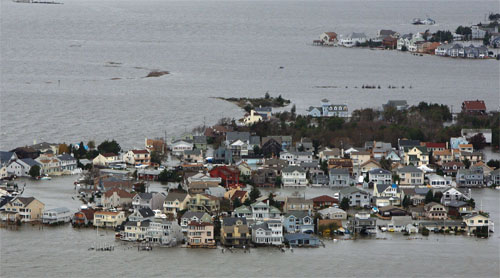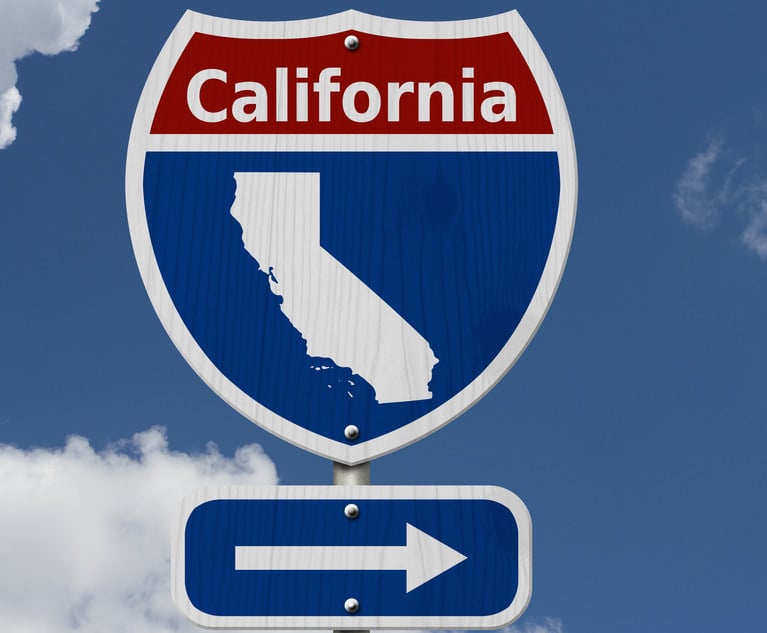 Superstorm Sandy certainly earned its name:The combination hurricane/nor'easter spawned high winds and highwater, flooding lower Manhattan, erasing landmarks from the JerseyShore and dumping three feet of snow in WestVirginia.
Superstorm Sandy certainly earned its name:The combination hurricane/nor'easter spawned high winds and highwater, flooding lower Manhattan, erasing landmarks from the JerseyShore and dumping three feet of snow in WestVirginia.
East Coast cities and towns from North Carolina to Connecticutfelt Sandy's power—and in the coming weeks and months, residents inaffected areas will likely face another impact of the storm: higherpremiums and less availability of Homeowners' insurance. A nationalcatastrophe fund could soften future blows by spreading risk acrossstate lines and pooling capital, allowing for the “pre-funding” ofall natural disasters in the U.S.
|It certainly sounds like a great idea if you live in Florida orother coastal states, but imagine how it sounds to taxpayers instates that aren't affected by such weather events. The truth is,however, that people in those states end up paying for disastersanyway, in the form of Federal Emergency Management Agency (FEMA)and other government-administered post-disasterassistance.
|Sandy is just the most recent example of how hurricanes don'talways play favorites. The total cost of property damage and lostbusiness ranges, depending on the cat modeler, from $15 billion to$30 billion—which will place it among the Top 3 most expensive U.S.natural disasters on record. And who says “the big one” has to be ahurricane? In 2011 alone, wildfires burned 370,000 acres and caused$6.9 billion in damage in Texas, New Mexico and Arizona. UpperMidwest and Mississippi River flood damage totaled more than $5billion, and tornadoes ripped through the Midwest and Southeast,causing $10.3 billion in insured damage.
|And what about tsunamis, earthquakes and drought? No state isimmune from natural disasters. If multiple states pooledtheir catastrophic risk, they would achieve an economy of scale andrisk diversity that would effectively lower their cost ofreinsurance in a way states cannot achieve on theirown.
|Here in Florida, we struggle with the availability andaffordability of Homeowners' insurance—something our friends alongthe Gulf and Atlantic coasts are already beginning to know toowell. States that pool resources under a national cat-fund modelwould, in essence, provide a backstop for private insurers in theirstate. That, in turn, would make the private market more stable,heat up competition among insurers for non-catastrophic perils, andhelp prevent company insolvencies and marketplace disruption in thefuture.
|Many scientists believe climate change will increase the numberand severity of natural disasters in North America. There's no wayto know with absolute certainty if that's the case, but worldwideinsurance-risk experts such as Munich Re and others are factoringclimate change into their risk models. Indeed, the insuranceindustry is betting on larger and more costly catastrophes in thefuture and is managing business accordingly. Will our nation beproactive, or will we continue to deal with the predictableconsequences in an unsustainable way?
|Spreading risk is a proven economic principle that makesinsurance more affordable and plentiful. While the definition ofwhat constitutes a natural disaster is somewhat controversial,there is no question that some natural disasters will exceed thefinancial capacity of state funds. Only a program that is nationalin scope can generate enough capacity to cover the most costlydisasters. A national cat fund is long overdue—and Congress shouldact now to put it into place.
Want to continue reading?
Become a Free PropertyCasualty360 Digital Reader
Your access to unlimited PropertyCasualty360 content isn’t changing.
Once you are an ALM digital member, you’ll receive:
- All PropertyCasualty360.com news coverage, best practices, and in-depth analysis.
- Educational webcasts, resources from industry leaders, and informative newsletters.
- Other award-winning websites including BenefitsPRO.com and ThinkAdvisor.com.
Already have an account? Sign In
© 2024 ALM Global, LLC, All Rights Reserved. Request academic re-use from www.copyright.com. All other uses, submit a request to [email protected]. For more information visit Asset & Logo Licensing.








